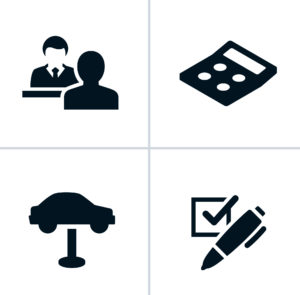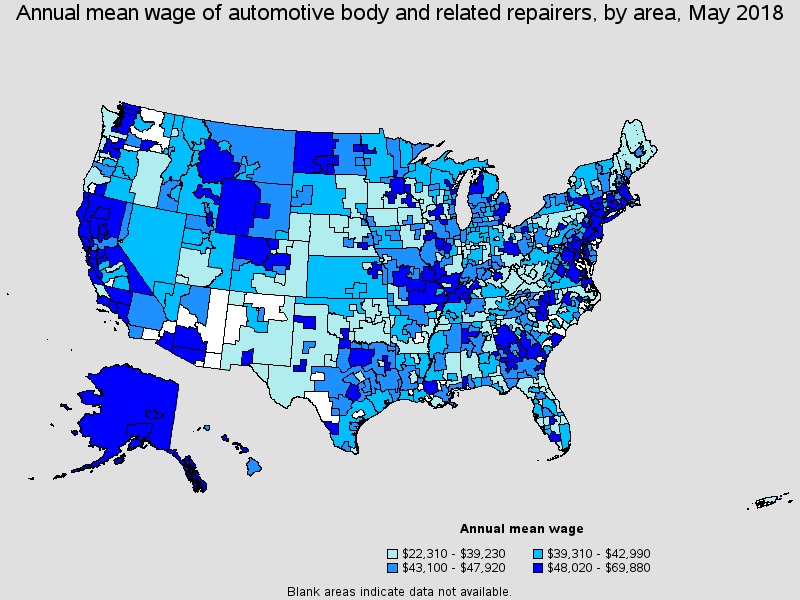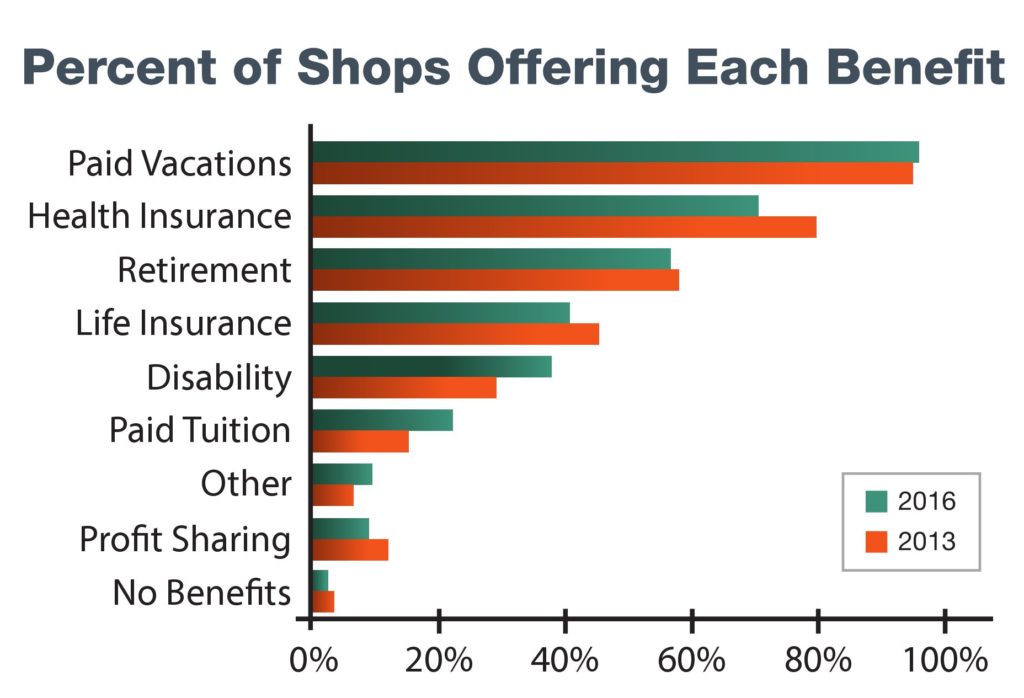
Measure your shop with these auto body stats; help CREF, I-CAR build new data
By onAnnouncements | Associations | Business Practices | Education | Market Trends
Time is running out for auto body shops to take the 2019 edition of the Collision Repair Education Foundation and I-CAR’s Industry Snapshot Survey.
The surveys are only conducted every three years, so it’s important repairers not miss the chance to support the research. One owner or manager per shop should hustle over to www.cvent.com/d/tbq2lk?refid=cref before May 19 and add their facility’s data to the study so the researchers and those using the results have as complete a picture of the industry as possible. All responses are kept confidential; data is only published in the aggregate.
The ensuing data is shared for free with the industry; see the 2016 study’s results here and some coverage of it here and here. The results provide valuable benchmarks for repairers — and their employees — to measure their own facility and their competitors. Other folks might also use the information to provide resources or analysis for the industry. (We’ve definitely used some of the information to enrich articles with additional context.)
Shops concerned about a lack of qualified technicians also might benefit from the chance to share feedback with CREF, collision repair students and vocational programs about what skills the schools should emphasize.
For example, the 2016 study overwhelmingly found shops expected entry-level techs to be able to prep for paint, remove and replace bolted parts, fix plastic and steel dents, use a MIG welder, detail a vehicle — and have basic business skills.
And if all of that wasn’t enough reason, CREF and I-CAR are also giving out $100, $200 and $300 American Express gift cards to lucky survey participants.
“Your input will help us continue to provide this valuable service for the industry and for the schools which train the next generation of entry-level technicians for the industry,” CREF wrote in the introduction to the 2019 survey.
So there you go. Take the study here. Email any questions to info@ed-foundation.org.
Industry data
Here’s some highlights from the 2016 and 2013 studies and recent federal data about the industry to get you in the survey mood.
The CREF surveys were open to everyone and drew more than 630 responses in 2016 and 500 in 2013. The feds use a formal statistical process for their answers and estimates and have their own definitions of who’s a shop and who’s an employee. (For example, the Bureau of Labor Statistics counts glass workers and painters differently than what it classifies as “auto body repairers.”)
Average income for production techs/auto body repairers
CREF 2016: $53,857, which CREF and I-CAR called “competitive with similar skilled trades and higher than most.” 28 percent made $70,000 or more.
BLS 2018: $46,460. Alaska paid the best with an average of $61,440. West Virginia was the lowest at $37,800. Santa Rosa, Calif., paid the best of all metropolitan areas at $69,880, while West North Dakota paid the best out of all nonmetropolitan areas at $59,950.

Employment
CREF 2016: 52.3 percent of shops had more than six technicians. The average number of technicians and support staff fell to 12.7 from 13.3 in 2013, which is kind of interesting.
Census 2016: Average shop has 7.03 employees — up from 6.33 in 2013. 43.69 percent have five or more employees.
Average tech/body repairer demographics
CREF 2016: “Average technician age has increased to almost 41 years old, rising about 13% since 1995.”
BLS 2018: Median age 42.9 years, up from 41 in 2015. 30.9 percent are Hispanic or Latino, up from 22.3 percent in 2015.
Training
CREF 2016: 36 percent of technicians in 2016 were said to have some OEM training in the past two years — up from just six percent in 2013.
Hiring entry-level techs
CREF 2016: 49 percent of shops hired technicians from another shop, compared to 61 percent in 2013.
Benefits
CREF 2016: Less than 3 percent of businesses offered no benefits, down from 7.5 percent in 2013.

More information:
“COLLISION REPAIR INDUSTRY SNAPSHOT SURVEY LAUNCHED”
CREF, April 12, 2019
Take the 2019 CREF/I-CAR industry survey
2016 Snapshot of the Collision Industry Survey
2013 Snapshot of the Collision Industry Survey
BLS Current Population Survey data
BLS auto body occupation profile
Census statistics of U.S. businesses
Images:
Take the latest Collision Repair Education Foundation-I-CAR survey before May 19, 2019. (appleuzr/iStock)
The Bureau of Labor Statistics’ May 2018 data on metropolitan and non-metropolitan average wages for auto body technicians. (Provided by BLS)
A Collision Repair Education Foundation and I-CAR survey found health care was offered as a benefit at fewer collision repair businesses in 2016. (Provided by Collision Repair Education Foundation/I-CAR)
